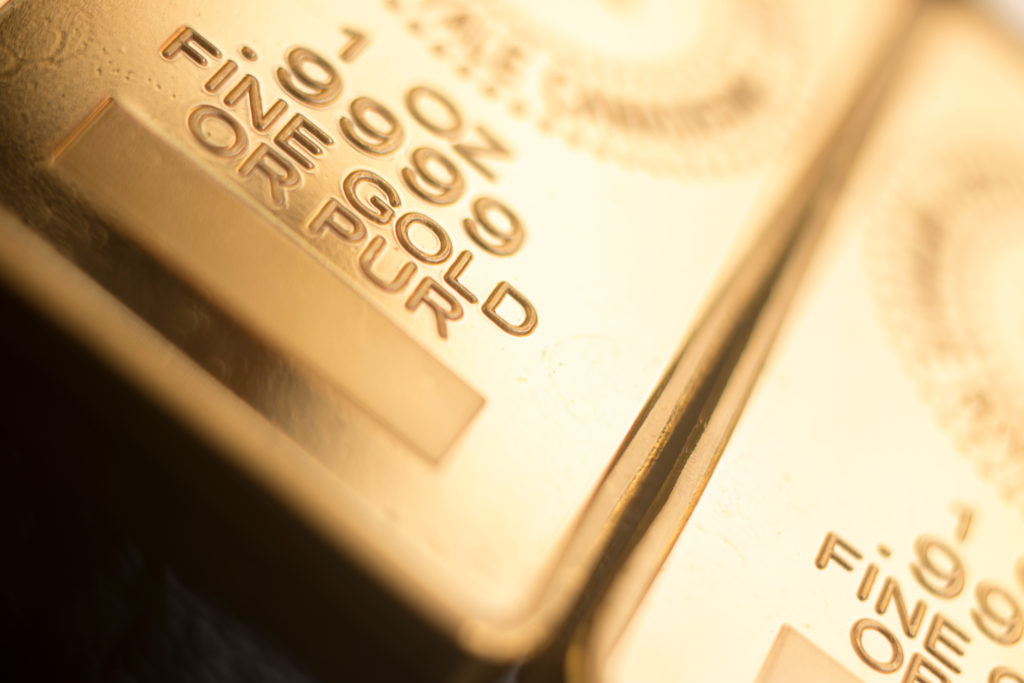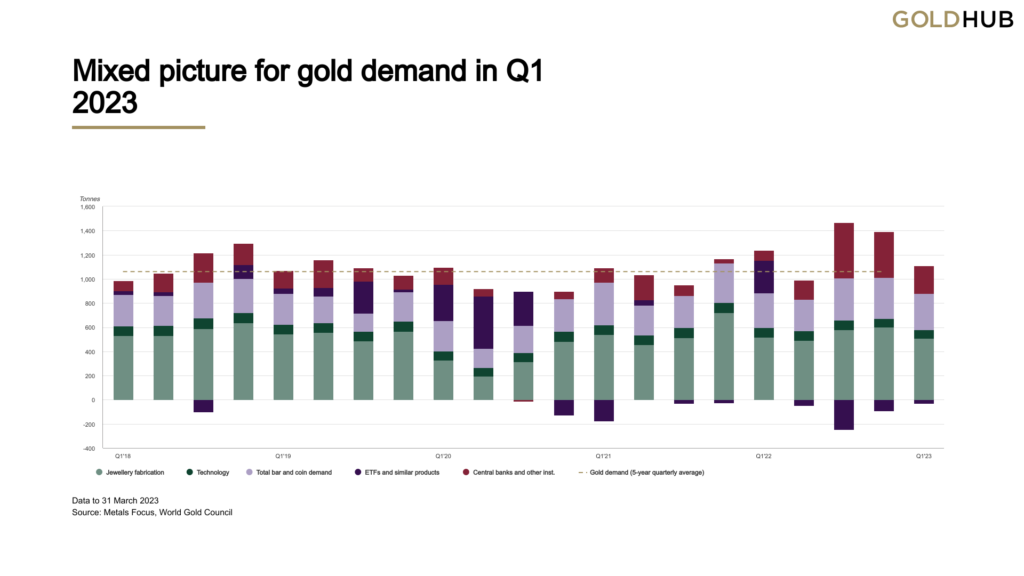
While central banks continued to accumulate gold during the first three months of 2023, these purchases were largely offset by reduced investor buying, resulting in a decrease in demand for the quarter, the World Gold Council reported Friday.
Total demand between January-March amounted to 1,081 tonnes, down 13% from the same period in 2022, the WGC said in its latest Gold Demand Trends report. However, the first quarter of 2023 saw a recovery in the OTC market, which, if included, would lift demand to 1,174 tonnes for a 1% year-on-year increase.

With the price near record average highs for the quarter at $1,890/oz, a “mixed picture” for gold in Q1 exemplifies its diverse and global sources of demand, the Council stated in its report.
Central banks helped boost demand adding 228 tonnes to global reserves, a Q1 record high in this data series. Sustained and significant purchases from the official sector underscore gold’s role in international reserve portfolios during times of market volatility and heightened risk, WGC said.
In comparison, jewellery was relatively flat in the first quarter at 478 tonnes. Chinese demand regained ground, reaching 198 tonnes in its first quarter of unfettered consumer activity since lockdown restrictions were lifted. This offset weakened demand in India, where consumption fell by 17% year-on-year to 78 tonnes in Q1 2023. The sharp increase in domestic gold prices was the primary factor impacting purchases.
Investment demand was a chequered landscape in the first quarter. Renewed gold-backed ETF inflows in March, driven primarily by systemic risk in the US economy, partially countered outflows in January and February and helped bring quarterly outflows down to a modest 29 tonnes.
On the other hand, bar and coin investment strengthened 5% year-on-year to 302 tonnes, although there were notable shifts in key markets. US bar and coin demand hit 32 tonnes in Q1, the highest quarterly level since 2010, driven primarily by recession fears and a flight-to-safety amid the banking turmoil.
On the supply side, there was a slight increase in Q1 total gold supply to 1,174 tonnes, with marginal 2% growth in mine production and a 5% uptick in recycling driven by the higher gold price.
“The mixed picture for Q1 highlights how gold’s diverse sources of demand underpin its role and performance as a global asset. Growth in some regions offset weakness in others as different economic forces and demand drivers played out in the global gold market. One commonality was that different types of investors looked to gold as a store of value in uncertain times,” Louise Street, WGC’s senior markets analyst, said.
“Against the backdrop of turmoil in the banking sector, ongoing geopolitical tensions and a challenging economic environment, gold’s role as a safe haven asset has come to the fore,” Street added.
Looking ahead, Street predicts that investment demand will continue to grow this year, especially with waning headwinds from the strong US dollar and interest rate hikes.
“Positive demand for gold ETFs has continued in Q2 so far, and the looming threat of developed market recession may be the trigger for inflows to accelerate later in the year. Central bank buying is likely to remain strong and will be a cornerstone of demand throughout 2023 – even if at lower levels than the record highs seen last year,” she noted.